Antibacterial Screening of Crude Fractions of Calotropis Procera (Linn) and Gc-Ms Profile of Fractions Obtained from the Extracts of Calotropis Procera
Introduction
The use of herbal medicine as alternative therapy has prevalent throughout the world due to the growing resistance of pathogens to conventional antibiotics De Smet [1]. The need for more potent, safe and affordable drugs has led to intensified research into herbal drugs, the result of which is the introduction of new herbal preparation for therapeutic uses Griggs et al. [2]. Medicinal plants are frequently used as remedies for many infectious diseases Ahmed et al. [3]. The treatment and control of diseases by the use of the available medicinal plants in a locality have been helpful and of a priority to majority of urban and rural dwellers in healing various diseases because of the reliability and stability in plant products for healing Akharaiyi et al. [4] Calotropis procera (Apple of Sodom) is a shrub or small tree, which has become a serious weed in pastures and overgrazed rangelands. It is a native to West Africa as far as south as Angola, North and East African, Madagascar, the Arabian Peninsula, Southern Asia, India and China to Malaysia. Calotropis was formerly placed in the family of Asclepiadaceous (the milkweed family), which is now considered a subfamily of the Apocynaceae Stevens [5].
Materials and Method
Collection of Plant Samples
Apparently healthy plant namely C. procera were collected from Ado-Ekiti, Ekiti State Nigeria.
Preparations of Plant Extracts
The plants parts leaves and stem were air-dried for 5 weeks at room temperature (25+2oC) and then ground to powder with a mechanical grinder (Thomas Wiley machine, model 5 USA). Powders (200gs) of each plant were extracted with 1litre of sterile aqueous water, ethanol, methanol and acetone separately at room temperature (25+2oC). They were labeled as crude extracts.
Antibacterial Screening of the Crude Fractions
The evaluation of antimicrobial activity was performed for all fractions by the paper disc agar diffusion method following the standard rules of antimicrobial sensitivity tests by the Clinical and Laboratory Standards Institute (CLSI, 2015). The antibacterial effect of the fractions was carried out whereby the discs were previously impregnated with the plant crude fractions and placed on the sterile prepared medium. The plates were incubated at 37oC for 24-48 hours. The sensitivity of the test organisms to each of the extracts was indicated by clearing around each disc. The diameter as an index of the degree of sensitivity was measured with a transparent plastic ruler.
Column Chromatography and Fraction Extracts
Glass wool was placed at the outlet of a column after which, one gram of plant extract powder was weighed into it and subjected to column chromatography (30 x 8cm column) using 60g of silica gel 60 F254 (Merck, 0.020mm thickness). The column was successively eluted first with petroleum ether (150ml) and then with chloroform (80ml): methanol (2ml) (40: 1) and finally with 100% methanol (150ml). Each 100 ml eluent was collected into a round bottom flask (250ml) capacity and distilled to obtain fractions. The fractions collected were numbered. Gc-Ms analysis was carried out in GCMS-QP2010 PLUS shamadzu.
Results
Antibacterial Screening of Crude Fractions
The Antibacterial screening of the crude fractions of Calotropis procera leaf was examined; some chemicals were used in the fractionalization of the crude sample, which are methanol, chloroform and petroleum ether. Methanol, Aqueous and Acetone leaf fractions showed the highest zone of inhibition of 30, 20 and 20mm respectively. The use of petroleum Ether do not show any significant antibacterial effects against the isolates while aqueous crude fractions shows an effective antibacterial activity against S. aureus at zone of inhibition of 15mm (Table 1). This table presents the antibacterial screening of the stem crude fractions to indicate the effectiveness of various bioactive or metabolite fractions found in the crude stem extracts of the plant (C. procera). During this research, also methanol was found to show a significant antibacterial effect on K. pneumoniae at zone of inhibition of 25mm. Both methanol and aqueous crude fractions have shown good antibacterial activities (Table 2). These plates indicate the Gc-ms analysis with peaks of secondary metabolites of the crude fractions. These shows different peaks which implies different chemical compounds that are been found in the fractions (Figures 1-6). The chemical compounds of the crude fractions were determined and listed out with their retention time and the concentration of the chemical compounds in percentage. The chemical compounds found are phenol, methyl palmitate, 9-octadecenoic acid, Phthalic acid, Dimethyl Sulfoxide, Phytol etc. (Tables 3-8).
Table 1: Antibacterial screening of crude fractions of Calotropis procera leaf (mm).
Note: ACM- Acetone methanol, ACC- Acetone Chloroform, ACP-Acetone Pet. Ether, MM-methanol methanol, MC-Methanol Chloroform, MP-Methanol pet. Ether, AQC-Aqueous Chloroform, AQP Aqueous Pet.ether, AQM- Aqueous Methanol, EM-Ethanol Methanol, EC- Ethanol Chloroform, EP- Ethanol Pet. Ether.
Table 2: Antibacterial screening of crude fractions of Calotropis procera (Linn) stem (mm).
Note: ACM- Acetone methanol, ACC- Acetone Chloroform, ACP-Acetone Pet. Ether, MM-methanol methanol, MC-Methanol Chloroform, MP-Methanol pet. Ether, AQC-Aqueous Chloroform, AQP-Aqueous Pet.ether, AQM- Aqueous Methanol, EM-Ethanol Methanol, EC- Ethanol Chloroform, EP- Ethanol Pet. Ether.
Figure 1: Gc-Ms Analysis with Peaks of Secondary Metabolites of MMS (Methanol Methanol Stem Fraction).
Figure 2: Gc-Ms Analysis with Peaks of Secondary Metabolites of MAS (Methanol Aqueous Stem Fraction).
Figure 3: Gc-Ms Analysis with Peaks of Secondary Metabolites of CAL (Chloroform Aqueous Leaf Fraction).
Figure 4: Gc-Ms Analysis with Peaks of Secondary Metabolites of PAL (Pet-Ether Acetone Leaf Fraction).
Figure 5: Gc-Ms Analysis with Peaks of Secondary Metabolites of MML (Methanol Methanol Leaf Fraction).
Figure 6: Gc-Ms Analysis with peaks of secondary metabolites of Mal (Methanol Aqueous Leaf Fraction).
Discussion
Antibacterial activities of the crude fractions showed that this plant can be used for curing many diseases such as pneumonia, dysentery etc. The results demonstrated that the crude extracts were more efficient than the fractions, this findings might suggest that Phytochemical constituents in combination may be having synergy in their efficacy, which is in agreement with many other report that have shown higher antibacterial potency of crude extracts as compared to the fraction Martins et al. [6]. The difference of various plant extracts in the antimicrobial activity is expected, as the activity is based not only on the different structures of microorganisms but also on their susceptibilities Zhang et al. [7]. This inhibitory action could be attributed to the phytochemical constituents, since these constituents are well established as antimicrobial agents Nenaah [8]. In the present study, in the agar diffusion assay the methanol and chloroform extracts showed the larger inhibition halo enabling to observe the extraction potential of the solvent employed. Differences in the activity between the fractions can be partly explained by quantitative and qualitative variations in the secondary metabolites present in the fractions which are in support with Ogundare et al. [9,10] and could be due to the use of different parts of the plants and leading to the extraction of different compounds and with antimicrobial activity. GC-MS technique was used to effect complete separation and identification of the pure compounds in the combined fractions. The presence or absence of functional groups in an organic molecule determines the manner in which that organic molecule will fragment. The presence or absence of various mass peaks in each spectrum was used to deduce the structure of the compounds. The compounds identified are phthalic acid, butane, methyl palmitate, n-hexadecanoic acid, phytol etc.
Conclusion
The present study has investigated the efficacy of Calotropis procera which can be considered in folklore or traditional medicine, edible vegetable and animal forage. The overall results showed that the crude fractions of this plant have an appreciable antibacterial activity on the selected microorganisms and also the chemical compounds present in the plant simplifies that C. procera extracts could maximally serve as alternative to highly rated synthesized drugs whose costs are unaffordable by the common man.
For more Articles: https://biomedres01.blogspot.com/



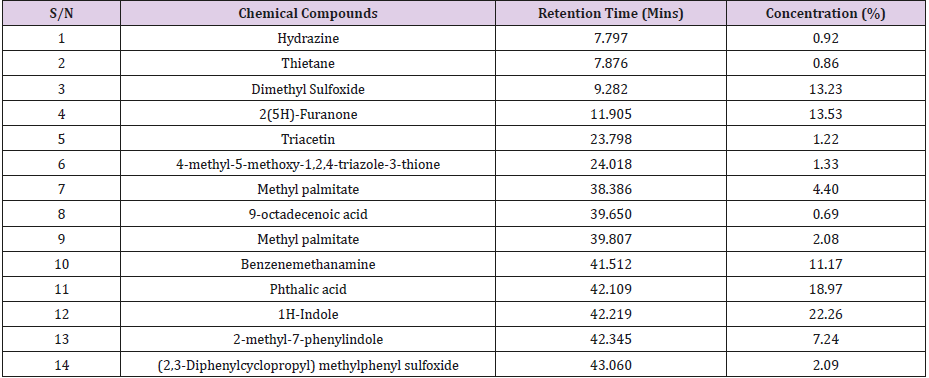

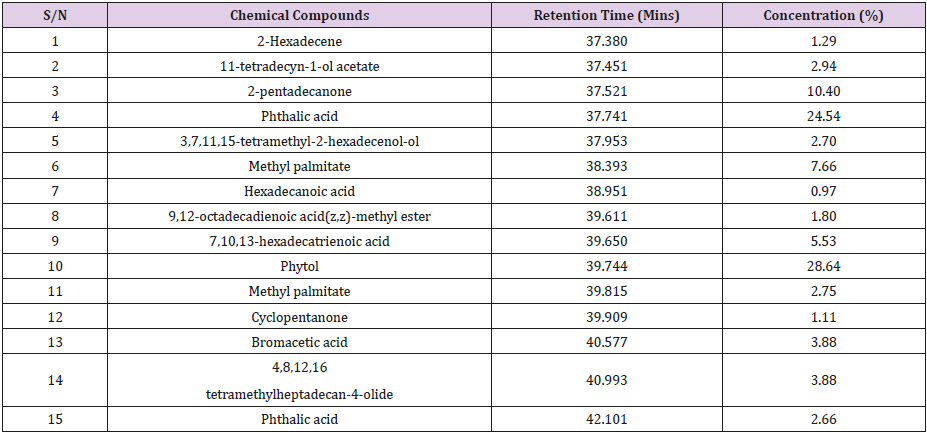


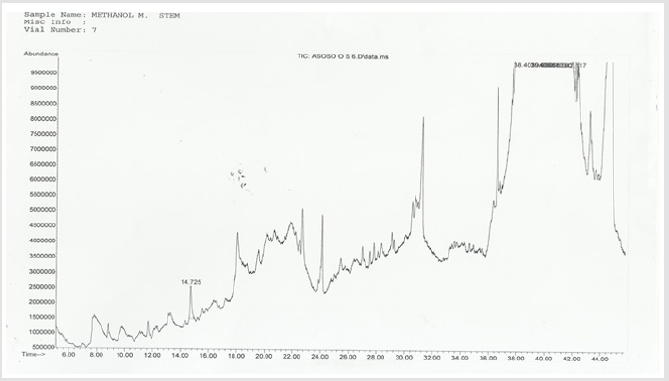
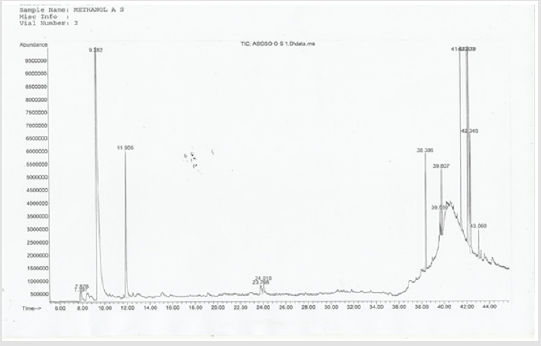
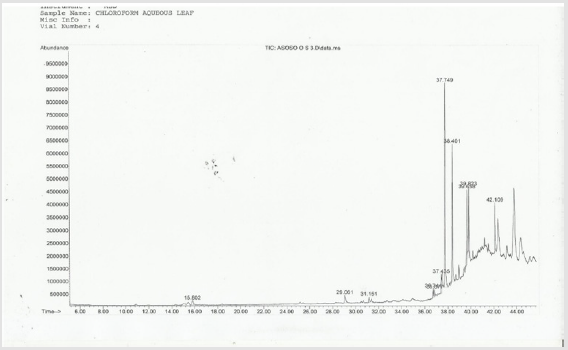
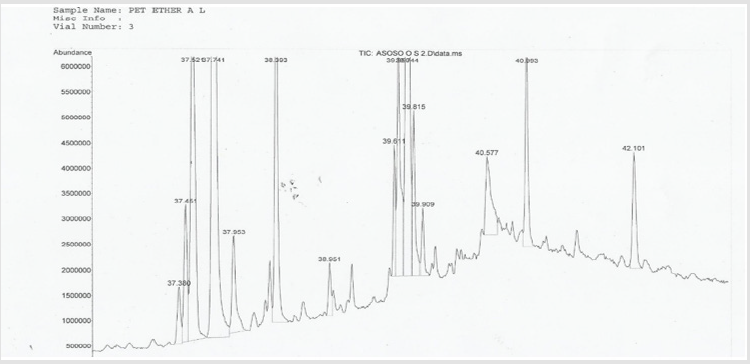
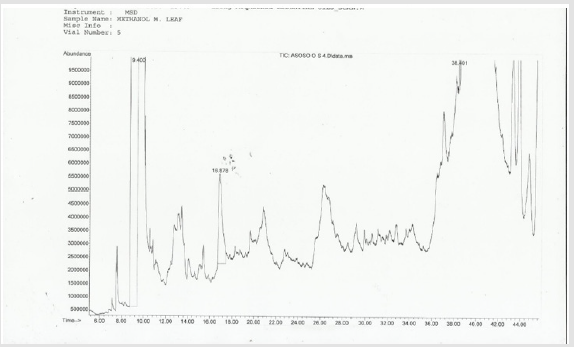
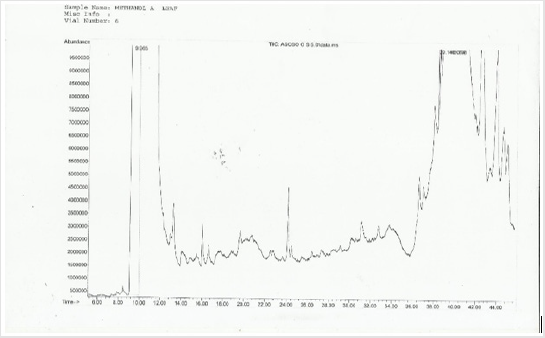


No comments:
Post a Comment
Note: Only a member of this blog may post a comment.